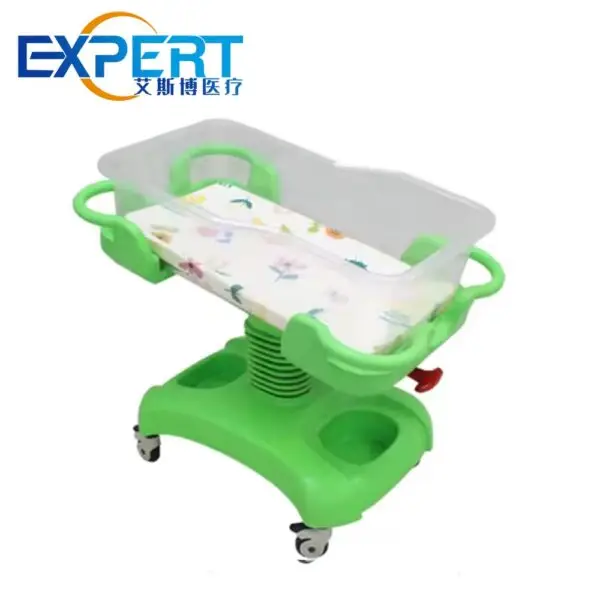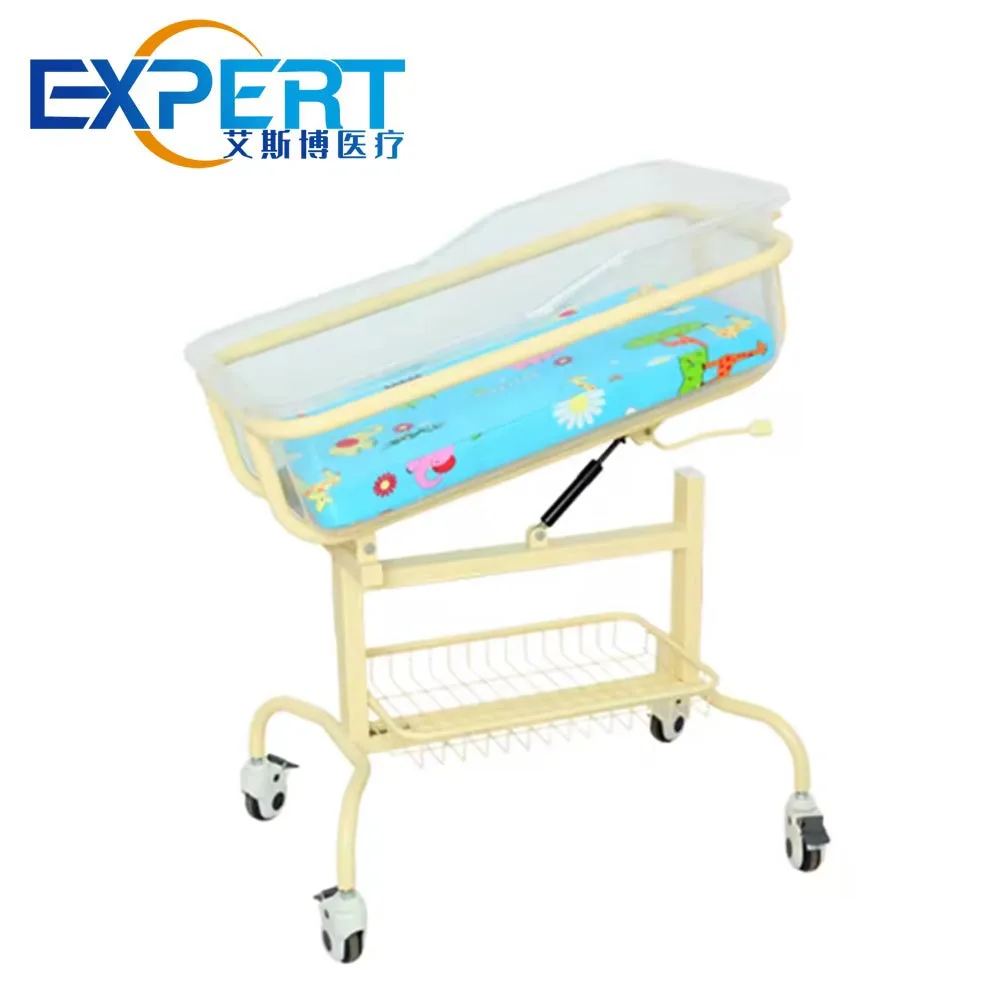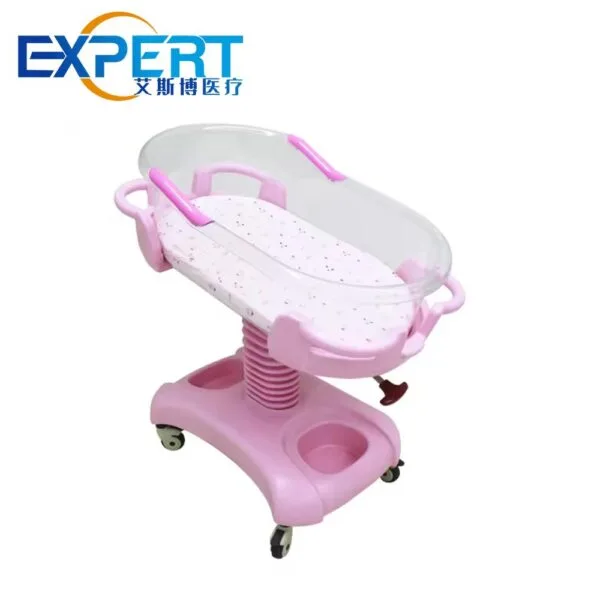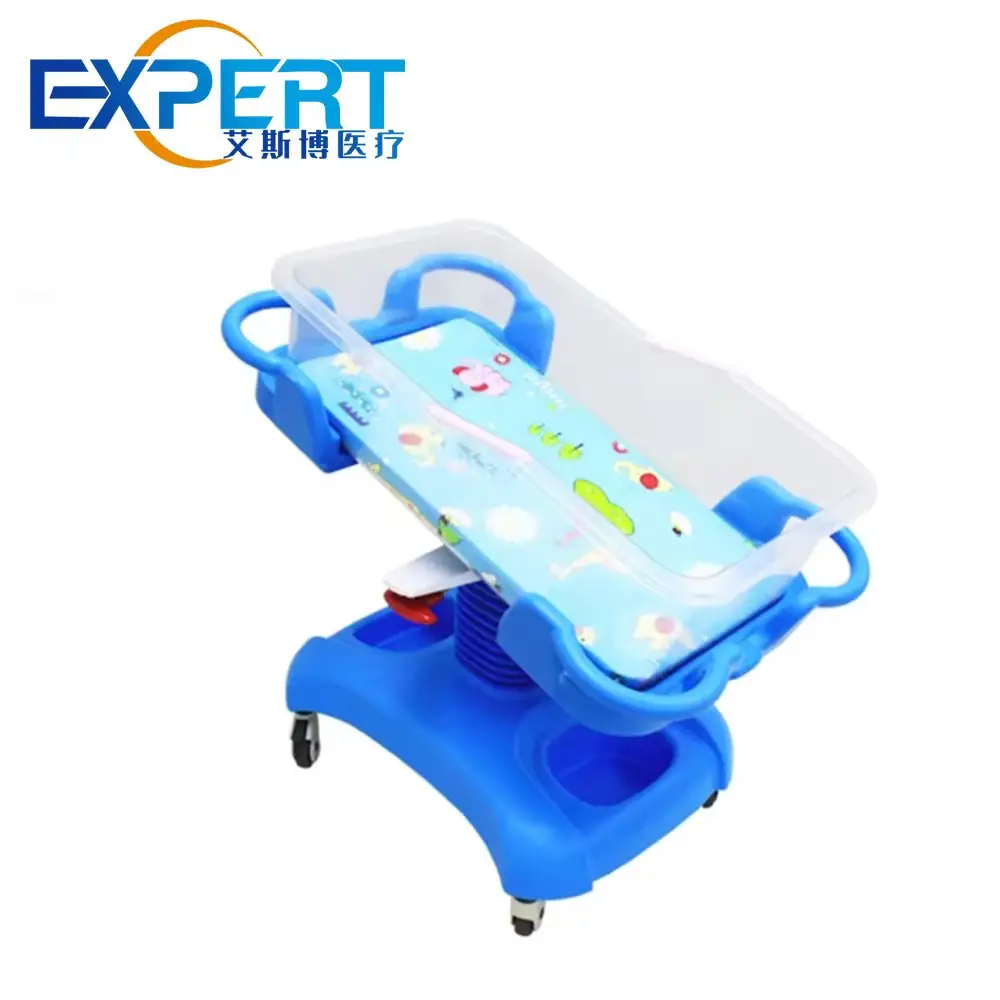عنوان
304 شارع الكاردينال الشمالي
مركز دورتشستر ، ماساتشوستس 02124
ساعات العمل
من الاثنين إلى الجمعة: 7 صباحًا - 7 مساءً
عطلة نهاية الأسبوع: 10 صباحًا - 5 مساءً
مرحباً بكم في مدونتي!
قبل أن نتعمق في المحتوى، إذا كنت مهتمًا بمنتجاتنا أو لديك أي أسئلة، فلا تتردد في زيارة موقعنا اتصل بنا صفحة على موقعنا الإلكتروني. فريقنا جاهز لمساعدتك في أي استفسارات أو طلبات أو أي دعم قد تحتاجه.
لنبدأ رحلتنا معًا. آمل أن تجدوا هذا المحتوى ثريًا وجذابًا وقيّمًا.

يُعد توفير أعلى مستوى من الرعاية والسلامة لحديثي الولادة أولويةً لمقدمي الرعاية الصحية، لا سيما في وحدات العناية المركزة لحديثي الولادة وأجنحة الأطفال. يُعد سرير مستشفى الرضع من أهم المعدات في هذه البيئات. صُممت هذه الأسرّة خصيصًا للرضع وحديثي الولادة، وتلعب دورًا حاسمًا في ضمان راحة وسلامة ورفاهية المرضى الأكثر عرضة للخطر. ستستكشف هذه المدونة ميزات وفوائد وأهمية اختيار سرير مستشفى الرضع المناسب، بالإضافة إلى تقديم رؤىً حول كيفية مساهمة هذه الأسرّة في تحسين الرعاية في المستشفيات.
سرير مستشفى الأطفال هو سرير طبي متخصص مصمم لدعم وتوفير الرعاية لحديثي الولادة، وخاصةً في المستشفيات مثل وحدات العناية المركزة لحديثي الولادة، وأقسام الولادة، ووحدات طب الأطفال. صُممت هذه الأسرّة بمواصفات تُولي الأولوية لسلامة وراحة ورفاهية الرضيع، مع تمكين مقدمي الرعاية الصحية من تقديم رعاية مثالية.
غالبًا ما تُجهّز أسرّة المستشفيات للأطفال الرضع بقضبان أمان، وإعدادات ارتفاع قابلة للتعديل، ووظائف مُحددة مثل إمكانية الإمالة، وجميعها مُصممة لتلبية احتياجات الأطفال الخُدّج أو المرضى. كما تُصمّم عادةً بجوانب شفافة لسهولة مُلاحظتها ومراقبتها من قِبل الطاقم الطبي وأولياء الأمور.
يتطلب اختيار سرير المستشفى المناسب للأطفال الرضع فهم الميزات الرئيسية التي تجعل هذه الأسرّة مناسبة للاستخدام في المستشفيات. فيما يلي بعض الميزات المهمة التي يجب مراعاتها:
من أهم مميزات سرير الرضيع إمكانية تعديل ارتفاعه ووضعيته. تتيح إمكانية رفعه أو خفضه، بالإضافة إلى إمالته في اتجاهات مختلفة، لمقدمي الرعاية الصحية وضع الرضيع بشكل أفضل أثناء الإجراءات الطبية أو أثناء راحته. كما تُخفف هذه الميزة الضغط على الطاقم الطبي ومقدمي الرعاية من خلال تسهيل الوصول إلى الرضيع.
السلامة هي الشغل الشاغل عند رعاية حديثي الولادة، وقد صُمم سرير الأطفال بقضبان أمان عالية الجودة تمنع السقوط أو الإصابات. عادةً ما تكون هذه القضبان مبطنة لتجنب أي أذى للطفل، بينما تسمح الجوانب الشفافة لمقدمي الرعاية بمراقبة الطفل من جميع الزوايا، مما يضمن مراقبة مستمرة دون إزعاج الرضيع.
العديد من أسرّة مستشفيات الأطفال مزودة بأنظمة تحكم متكاملة في درجة الحرارة للحفاظ على بيئة مناسبة لحديثي الولادة، وخاصةً في وحدات العناية المركزة لحديثي الولادة. تُعد مراقبة درجة الحرارة أمرًا بالغ الأهمية للأطفال الخدج الذين قد يجدون صعوبة في تنظيم درجة حرارة أجسامهم. تساعد الأسرّة المزودة بأجهزة تدفئة مدمجة في الحفاظ على راحة الرضيع واستقراره، مع تجنب الأجهزة الخارجية التي قد تُسبب فوضى في المكان.
غالبًا ما تكون أسرّة الأطفال مزودة بعجلات، مما يُسهّل نقلها بين الغرف أو مختلف أقسام المستشفى. تُعد هذه الميزة مفيدة بشكل خاص في حالات الطوارئ أو عند نقل الطفل لتلقي علاجات مختلفة. كما تُتيح سهولة نقل السرير لمقدمي الرعاية رعاية الطفل دون الحاجة إلى تحريكه بشكل متكرر، مما يُقلل من خطر التعرض لمزيد من التوتر أو الإصابة.
صُممت العديد من أسرّة مستشفيات الأطفال الرضع بمنصات أو حوامل مدمجة للأجهزة الطبية، مثل أجهزة المراقبة، وحوامل المحاليل الوريدية، وأجهزة التنفس الصناعي. يُعد هذا التكامل ضروريًا في وحدات العناية المركزة لحديثي الولادة، حيث قد يحتاج الرضع إلى إشراف طبي وعلاج مستمر. ومن خلال توفير سهولة الوصول إلى المعدات، يمكن لمقدمي الرعاية الصحية ضمان تجربة رعاية سلسة دون المساس براحة الرضيع.


إن فوائد استخدام سرير المستشفى عالي الجودة للأطفال تتجاوز الراحة الأساسية. وهنا بعض الفوائد الرئيسية:
تحسين السلامة
الوظيفة الأساسية لسرير الأطفال هي الحفاظ على سلامة المواليد الجدد. تضمن ميزات مثل قضبان الأمان، والإعدادات القابلة للتعديل، والجوانب الشفافة حماية الرضيع دائمًا مع مراقبته عن كثب من قِبل أخصائيي الرعاية الصحية وأولياء الأمور. تساعد هذه الميزات على منع السقوط العرضي، وضمان بيئة نوم آمنة، وراحة البال لمقدمي الرعاية.
تحسين المراقبة وإمكانية الوصول
بفضل ميزات مثل ارتفاعها القابل للتعديل وجوانبها الشفافة، تُمكّن أسرّة الأطفال مُقدّمي الرعاية الصحية من الوصول بسهولة إلى الطفل لتلقي العلاج، كما تُتيح للوالدين رؤية واضحة لمولودهم الجديد في جميع الأوقات. لا يُحسّن هذا التصميم كفاءة الإجراءات الطبية فحسب، بل يُوطّد أيضًا الرابطة بين الوالدين وأطفالهم من خلال توفير الطمأنينة البصرية الدائمة.
تنظيم درجة الحرارة
بالنسبة للرضع، وخاصةً الخُدّج، يُعدّ الحفاظ على درجة حرارة الجسم أمرًا بالغ الأهمية. تضمن أسرّة المستشفيات المُزوّدة بأجهزة تحكم مُدمجة في درجة الحرارة بقاءَ الأطفال في بيئة مُستقرة، مما يمنع تقلبات درجات الحرارة التي قد تُؤذي صحتهم. تُقلّل درجة الحرارة المُنظّمة جيدًا الضغط على أجهزة الطفل النامية، مما يُعزز نموه وتطوره الصحي.
انخفاض خطر الإصابة بالعدوى
تُصنع العديد من أسرّة مستشفيات الأطفال من مواد سهلة التنظيف والتطهير، مما يقلل من خطر العدوى. كما صُممت بعض الأسرّة بميزات تُعزز البيئات المعقمة، وهو أمر بالغ الأهمية في وحدات العناية المركزة لحديثي الولادة. كما يُعزز التعقيم المنتظم والأسطح المضادة للميكروبات مكافحة العدوى، ويحمي المواليد الجدد المعرضين للخطر من البكتيريا والفيروسات الضارة.
راحة مُحسّنة للأطفال ومقدمي الرعاية
بفضل تصميمها المريح وإعداداتها القابلة للتعديل، توفر أسرّة المستشفيات للأطفال الرضع الراحة ليس فقط للطفل، بل أيضًا لمقدمي الرعاية الصحية ومقدمي الرعاية الذين يحتاجون إلى إجراء عمليات جراحية أو تقديم الرعاية. تساعد المرتبة الناعمة والدعم اللطيف الطفل على النوم بعمق، بينما تُخفف الميزات القابلة للتعديل الضغط على الطاقم الطبي، مما يُحسّن كفاءة الرعاية بشكل عام.
يعتمد اختيار سرير المستشفى المناسب للأطفال على احتياجات المستشفى، وحالة الطفل، ومستوى الرعاية المطلوبة. إليك جدول مقارنة للأنواع الشائعة من أسرّة المستشفيات للأطفال:
| نوع السرير | دلائل الميزات | أفضل استخدام ل |
|---|---|---|
| سرير مستشفى أطفال قياسي | ارتفاع قابل للتعديل، قضبان أمان، التحكم في درجة الحرارة | الرعاية العامة لحديثي الولادة في أقسام الولادة |
| سرير حاضنة وحدة العناية المركزة لحديثي الولادة | مغلق بالكامل مع التحكم في درجة الحرارة والرطوبة | الأطفال الخدج أو المصابين بأمراض خطيرة في وحدات العناية المركزة لحديثي الولادة |
| سرير دافئ مشع | سرير مفتوح مع نظام تدفئة مشع | الرعاية والإنعاش بعد الولادة مباشرة |
| سرير أطفال قابل للتحويل | سرير قابل للتعديل مع جوانب شفافة | الرعاية الانتقالية في أجنحة الأطفال أو الأمومة |
| سرير نقل الرضع | سرير متنقل مع حاملات معدات متكاملة | نقل الأطفال بين الوحدات أو للإجراءات |

يتطلب اختيار سرير المستشفى المناسب للأطفال في منشأتك دراسة متأنية لعدة عوامل:
احتياجات المرضى
انتبه لنوع الرعاية المطلوبة للرضع في منشأتك. بالنسبة للرعاية العامة لحديثي الولادة، قد يكفي سرير مستشفى عادي للرضع بارتفاع قابل للتعديل وقضبان أمان. أما بالنسبة للرضع الخدج أو المصابين بأمراض خطيرة، فإن سرير حاضنة وحدة العناية المركزة لحديثي الولادة المزود بمراقبة متكاملة وتحكم في درجة الحرارة سيكون أنسب.
مساحة وتخطيط الوحدة
قيّم المساحة المتاحة في منشأتك، وخاصةً في وحدة العناية المركزة لحديثي الولادة أو جناح الولادة. تأكد من أن الأسرّة التي تختارها تتناسب بسهولة مع تصميم المنشأة، وتسمح بسهولة وصول مقدمي الرعاية والوالدين إلى الطفل.
متطلبات قابلية النقل
إذا كانت منشأتك تتطلب نقلًا متكررًا للرضع، فمن المهم اختيار أسرّة متحركة وسهلة المناورة. سرير نقل الرضع المزود بعجلات مدمجة وحوامل للمعدات يُسهّل الحركة دون إزعاج الطفل.
ميزات السلامة
أعطِ الأولوية لمزايا السلامة، مثل قضبان الأمان المتينة، والعجلات القابلة للقفل، والجوانب المبطنة، لضمان أعلى مستوى من الحماية للمواليد الجدد. كما تتيح الجوانب الشفافة مراقبة مستمرة مع تقليل الحاجة إلى التعامل المتكرر.
اعتبارات الميزانية
مع أن اختيار سرير مستشفى الأطفال المناسب أمر بالغ الأهمية، إلا أن قيود الميزانية قد تحد من خياراتك. تواصل مع الموردين للعثور على أسرّة تناسب احتياجاتك وميزانيتك، وفكّر في الاستثمار في أسرّة متعددة الاستخدامات يمكن استخدامها لمختلف مستويات الرعاية.
ال سرير مستشفى للأطفال يُعدّ سرير الأطفال حديثي الولادة من المعدات الأساسية في أي منشأة رعاية صحية تُقدّم رعايةً لحديثي الولادة. فهو يُعزز سلامة وراحة ورفاهية المواليد الجدد، ويُسهّل على مُقدّمي الرعاية الصحية تقديم رعاية مثالية. سواءً في وحدات العناية المركزة لحديثي الولادة، أو أجنحة الولادة، أو وحدات طب الأطفال، فإن اختيار السرير المُناسب لمنشأتك يضمن نتائج أفضل لكلٍّ من المواليد ومُقدّمي الرعاية. من التحكم في درجة الحرارة إلى سهولة الحركة والتكامل مع الأجهزة الطبية، يُمكن لسرير الأطفال المُناسب في المستشفى أن يُحدث فرقًا كبيرًا في رعاية المرضى.
ما هي أهم ميزة يجب مراعاتها في سرير مستشفى للأطفال?
أهم ميزة هي السلامة. ابحث عن أسرّة مزودة بقضبان أمان، وجوانب مبطنة، وألواح شفافة تتيح مراقبة مستمرة دون تعريض الطفل للإصابة.
كيف تساعد أسرة المستشفيات المخصصة للأطفال في تنظيم درجة حرارة الطفل حديث الولادة؟
تحتوي العديد من أسرة المستشفيات للأطفال على أنظمة مدمجة للتحكم في درجة الحرارة، مما يساعد في الحفاظ على بيئة مستقرة، وهو أمر مهم بشكل خاص للأطفال الخدج الذين قد يواجهون صعوبة في تنظيم درجة حرارة أجسامهم.
هل يمكن نقل أسرة المستشفيات للأطفال بسهولة؟
نعم، تم تصميم معظم أسرة المستشفيات للأطفال الرضع بعجلات لسهولة الحركة، مما يجعل من السهل نقل الأطفال بين الغرف أو الوحدات دون التسبب في أي إزعاج.
ما هو نوع سرير مستشفى للأطفال ما هو الأفضل لوحدات العناية المركزة لحديثي الولادة؟
بالنسبة لوحدات العناية المركزة لحديثي الولادة، غالبًا ما يكون سرير الحاضنة أو السرير الدافئ المشع هو الأفضل، حيث يوفر بيئة خاضعة للتحكم في درجة الحرارة والرطوبة، بالإضافة إلى سهولة الوصول إلى المعدات الطبية.
هل من السهل تنظيف أسرة المستشفيات للأطفال؟
نعم، عادةً ما تكون أسرة المستشفيات المخصصة للأطفال مصنوعة من مواد يسهل تطهيرها، مما يقلل من خطر الإصابة بالعدوى في بيئات رعاية الأطفال حديثي الولادة.
